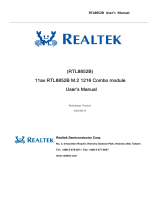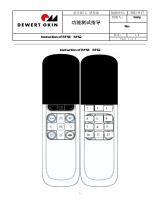Phillips Connect Technologies BT01 Manuel utilisateur
- Taper
- Manuel utilisateur

DoorSense Manual
BLE Wireless Sensor
Installs on the outside for loaded trailer installation
Works on Swing and Roll up doors
10-year life
The wireless door sensor is a small, battery operated
device to sense the door open/close status of a standard

intermodal shipping container. The device incorporates a
magnetic sensor, relying on a fixed magnet being placed
outside the device. The magnet may be placed on either the
opposing door or on the fixed door frame at the top of the
container. Neither the device nor magnet should protrude in
thickness further than a standard door open/close bar. The
device wirelessly broadcasts status information as BLE 5
advertisements to inform a gateway receiver placed on the
nose of the container of the door open/close status.
FCC Statement
This device complies with part 15 of the FCC rules. Operation is subject to the
following two conditions: (1) this device may not cause harmful interference,
and (2) this device must accept any interference received, including
interference that may cause undesired operation.
Changes or modifications not expressly approved by the party responsible for
compliance could void the user's authority to operate the equipment.
NOTE: This equipment has been tested and found to comply with the limits for a
Class B digital device, pursuant to part 15 of the FCC Rules. These limits are
designed to provide reasonable protection against harmful interference in a
residential installation. This equipment generates uses and can radiate radio
frequency energy and, if not installed and used in accordance with the
instructions, may cause harmful interference to radio communications. However,
there is no guarantee that interference will not occur in a particular
installation. If this equipment does cause harmful interference to radio or
television reception, which can be determined by turning the equipment off and
on, the user is encouraged to try to correct the interference by one or more of
the following measures:
• Reorient or relocate the receiving antenna.
• Increase the separation between the equipment and receiver.
• Connect the equipment into an outlet on a circuit different from that to

which the receiver is connected.
• Consult the dealer or an experienced radio/TV technician for help.
Radiation Exposure Statement
This equipment complies with FCC radiation exposure limits set forth for an
uncontrolled environment. This equipment should be installed and operated with
minimum distance 20cm between the radiator and your body.
ISED Statement
‐ English: This device complies with Industry Canada license‐exempt RSS
standard(s). Operation is subject to the following two conditions: (1) This
device may not cause interference, and (2) This device must accept any
interference, including interference that may cause undesired operation of the
device. The digital apparatus complies with Canadian CAN ICES‐3
(B)/NMB‐3(B).
‐ French: Le présentappareilestconforme aux CNR d'Industrie Canada applicables
aux appareils radio exempts de licence. L'exploitationestautorisée aux deux
conditions suivantes: (1) l'appareil ne doit pas produire de brouillage, et (2)
l'utilisateur de l'appareildoit accepter tout brouillageradioélec triquesubi,
mêmesi le brouillageest susceptible d'encompromettre le fonctionnement.
This radio transmitter (ISED certification number: 25015-BT01) has been
approved by Industry Canada to operate with the antenna types listed with the
maximum permissible gain indicated. Antenna types not included in this list,
having a gain greater than the maximum gain indicated for that type, are
strictly prohibited for use with this device.
Le présent émetteur radio (ISED certification number: 25015-BT01) a été
approuvé par Industrie Canada pour fonctionner avec les types d'antenne
énumérés ci-dessous et ayant un gain admissible maximal. Les types d'antenne
non inclus dans cette liste, et dont le gain est supérieur au gain maximal
indiqué, sont strictement interdits pour l'exploitation de l'émetteur.
-
 1
1
-
 2
2
-
 3
3
Phillips Connect Technologies BT01 Manuel utilisateur
- Taper
- Manuel utilisateur
dans d''autres langues
Autres documents
-
GEM GROUP 100813 Manuel utilisateur
-
Intermec IM11 Integration Manual
-
GSD W37 Manuel utilisateur
-
 Realtek RTL8852B M.2 1216 Combo Module Manuel utilisateur
Realtek RTL8852B M.2 1216 Combo Module Manuel utilisateur
-
Eurotech DynaGATE 10-12 Le manuel du propriétaire
-
Eurotech DynaGATE 10-12 Le manuel du propriétaire
-
Eurotech ReliaGATE 10-12 Le manuel du propriétaire
-
KEESON MC232SC Manuel utilisateur
-
Eurotech DynaGATE 20-30 Le manuel du propriétaire
-
 dewert okin RF62 Remote Control Mode d'emploi
dewert okin RF62 Remote Control Mode d'emploi




